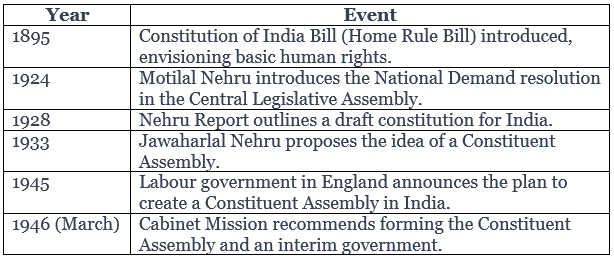Cheat Sheet: Making of the Constitution for India | History for UPSC CSE PDF Download
| Table of contents |

|
| Introduction |

|
| Background and Early Initiatives |

|
| Constituent Assembly Formation |

|
| Constituent Assembly Work |

|
| Committees and Consensus |

|
| Conclusion |

|
Introduction
The Indian Constitution, which came into effect on January 26, 1950, holds the distinction of being the longest in the world, reflecting the vastness and diversity of the country. The roots of the Constitution lie in the Indian national movement against colonial rule and the demand for responsible government. The process of framing the Constitution took place between December 1946 and December 1949, with its origins traced back to earlier initiatives like the Constitution of India Bill in 1895 and the Nehru Report in 1928.
Background and Early Initiatives

Constituent Assembly Formation

Constituent Assembly Work

Committees and Consensus

Conclusion
The Constituent Assembly of India, elected indirectly by Provincial Assemblies, worked diligently to draft the Constitution, addressing various issues and incorporating diverse perspectives. The process, spanning almost three years, resulted in the adoption of the Constitution on November 26, 1949. The Constituent Assembly not only shaped the constitutional framework but also contributed to the adoption of national symbols, emphasizing its multifaceted role in the journey towards an independent and sovereign democratic republic.
|
210 videos|853 docs|219 tests
|




















